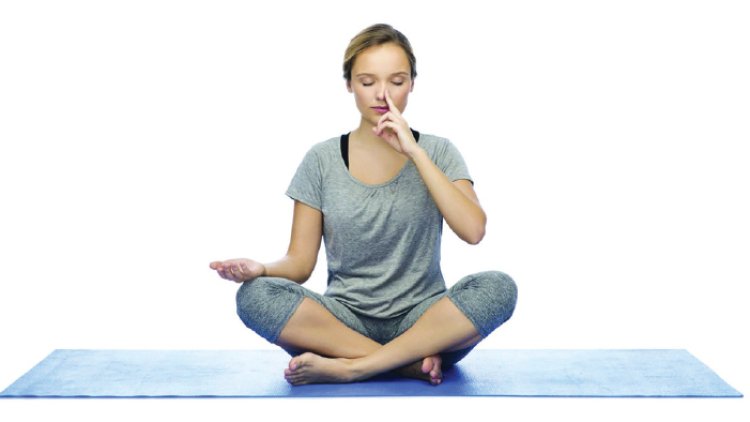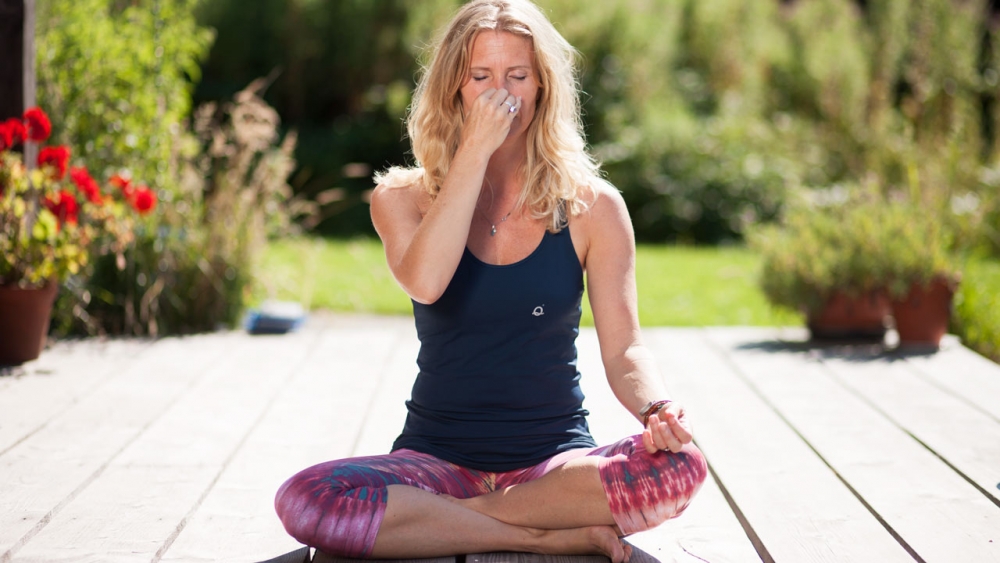What is pranayama and its types & techniques
What is pranayama? The fourth anga (limb) of yoga is known as pranayama, and pranayama yoga is frequently practiced.

What is pranayama? Pranayama is fundamentally operating in the prana dimension. Prana is the life-sustaining energy required by the physical and subconscious layers of the body; without it, the body would succumb. The prana or vital force within us nourishes the intellect and sustains the body.

Describing below What is pranayama and its benefits.
What is pranayama?
The fourth anga (limb) of yoga is known as pranayama, and pranayama yoga is frequently practiced. It is said that by controlling one's breathing, one can control the mental capacity. "Pranayama" is derived from the Sanskrit words "Prana" and "Ayama," which mean "breath" and "expansion," respectively. Yogic breathing exercises can help you control your prana, or vital energy.
Pranayama is an ancient breathing technique originating from the yogic traditions of India. It involves modulating the length, frequency, and duration of your respiration. The aim of pranayama is to connect the body and psyche. In addition to purging the body of impurities, it provides the body with ample oxygen and is intended to have healing-promoting physiological effects. The three phases of a pranayama yoga cycle are:
1. Puraka (Inhalation)
2. Kumbhaka (Retention)
3. Rechaka (Exhalation)
What is prana?
Although it is related to the respiration, prana is not the breath. Prana is an energy that travels through thousands of nadi energy channels and chakra energy centers. It generates a surrounding aura. Mental state is determined by the quantity and character of prana and its passage through the nadis and chakras.
The flux and energy of prana, the cosmic energy that flows through and around us, are affected by our actions, thoughts, and notably our breathing.
If the level of prana is high and its flow is continuous, seamless, and constant, the mind remains tranquil, optimistic, and enthusiastic. However, a lack of knowledge and attention to one's respiration may cause nadis and chakras to become partially blocked. This results in an irregular and interrupted prana flow. As a result, one experiences an increase in anxiety, dread, uncertainty, tension, and conflict, among other negative characteristics. Every issue originates in the subconscious before manifesting on the corporeal level. Sickness manifests in your prana (pranic sheath) well before it manifests physiologically.
Pranayama types and how to perform them
Ancient Indian sages understood that deep breathing exercises are simple to perform and can provide great physical and mental relaxation. Now that we understand what pranayama is, let's examine the various forms of pranayama that can be practiced. These numerous breathing techniques can be practiced effortlessly, at any time of day, and on an empty stomach.
Let's learn about the different varieties of pranayama and how to perform each one individually.
1. Bhramari Pranayama (Humming Bee Breath)
Is your consciousness a hive of activity? Can't stop considering what was said about you? Find a tranquil area and practice this form of pranayama to calm a racing mind. This breathing technique is beneficial for hypertensive patients.
Bhramari Pranayama, also known as Humming Bee Breath, is a yogic breathing exercise that helps us reconnect with our most authentic selves by calming the nervous system. This novice pranayama is named after the soft buzzing of a bee and is performed at the back of the larynx.
Learn more about the Bhramari Pranayama and how to perform it.
2. Kapalbhati Pranayama (Skull Shining Breath)
Kapalbhati Pranayama is a yogic breathing exercise whose name is derived from the Sanskrit words kapal (meaning cranium) and bhati (meaning "to shine").
This pranayama yoga is regarded as the most essential of the numerous deep breathing exercises. One of the benefits of pranayama is cleansing the energy channels and detoxifying the body.
This pranayama is for individuals with an intermediate to advanced level of breathing ability. It stimulates your circulatory and nervous systems, fortifies your thorax, and purifies your abdominal organs.
Learn more about what this pranayama is and how to perform it.
3. Bhastrika Pranayama (Bellows Breath)
Do you lack energy? Your energy levels will skyrocket after three cycles of Bhastrika Pranayama (bellows inhalation)! So, what is pranayama Bhastrika?
Bellows Breath, also known as Bhastrika Pranayama, is an invigorating deep breathing exercise that resembles feeding a fire with a steady flow of air. The Sanskrit term Bhastrika, which translates to "bellows," refers to the vigorous filling and purging (inhalation and exhalation) of the lungs and abdomen during this exercise. It stimulates the internal fire of the body and mind, fostering optimal digestion on all levels.
Learn more about the benefits and proper execution of Bhastrika pranayama.
4. Nadi Shodhan Pranayama (Alternate Nostril Breathing)
Cannot focus on the current task? Try nine cycles of Nadi Shodhan Pranayama (technique of alternate nostril breathing) followed by a 10-minute meditation session. By creating harmony between the two hemispheres of the brain, Nadi Shodhan Pranayama calms and focuses the consciousness.
Alternate Nostril Breathing, also known as Nadi Shodhan, is a potent deep breathing exercise with numerous pranayama benefits.
Shodhana means "purification" in Sanskrit, while nada means "channel or flow." Therefore, the primary purpose of Nadi Shodhana is to balance the entire system while purging and purifying the mind-body channels. It balances all three doshas and is beneficial for nearly everyone.
Learn the specifics of Nadi Shodhana and how to perform this type of pranayama.
The Art of Living Meditation and Breath workshop has the ideal blend of asanas, pranayama, and meditation to improve your health. Enjoy the advantages now.
Benefits of pranayama
We have learned what pranayama is and its different forms. Let us now concentrate on the benefits of pranayama. Regular practice of deep breathing exercises can drastically improve the quality of one's existence.
Numerous medical and scientific publications have analyzed the positive health effects of yogic breathing exercises. Despite the fact that each form of pranayama technique has its own unique characteristics and effects, it is essential to remember the general advantages of pranayama. If you intend to practice pranayama for any of these benefits, you should investigate the technique beforehand so that you can apply it accurately and are aware of any potential side effects.
Also read: Yoga for Pregnant Women
General benefits of pranayama:
1. Increases and enhances the quantity and quality of prana, thereby increasing our energy levels
2. Clears blocked nadis and chakras, thereby expanding our aura and heightening the spirit
3. Makes one energetic, enthusiastic, calmer and positive. Such a state of mind helps us in making better decisions, having mental strength when dealing with adversities and feel happier
4. Brings harmony between the body, mind, and spirit, making one physically, mentally and spiritually strong
5. It brings clarity to mind, and good health to the body












